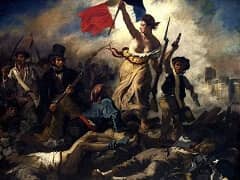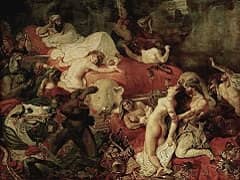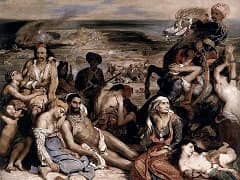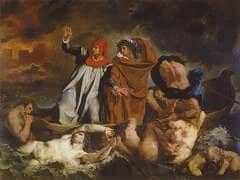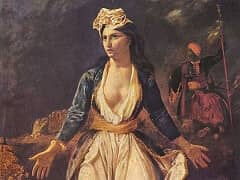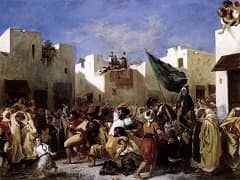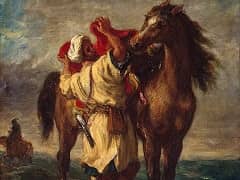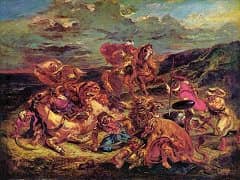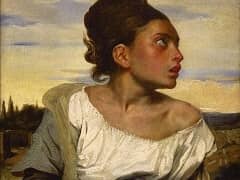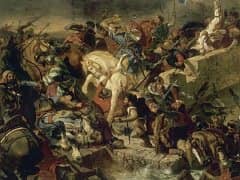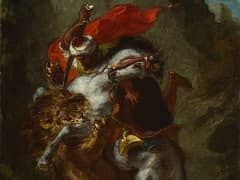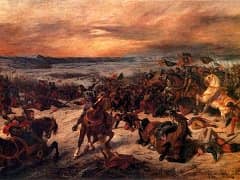Jewish Wedding in Morocco by Eugene Delacroix
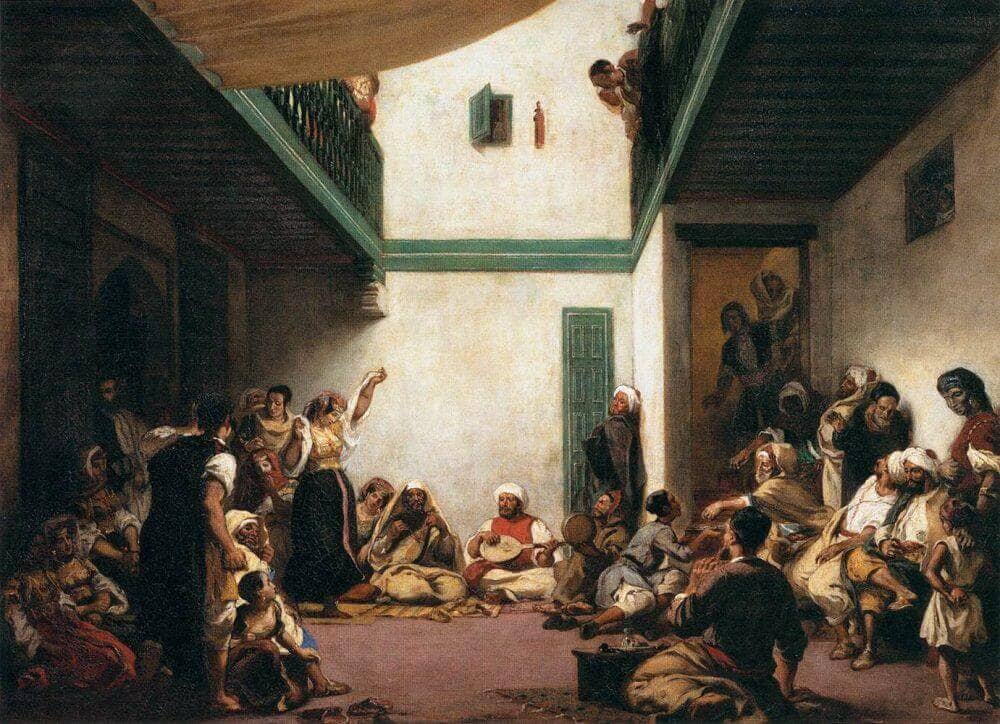
Delacroix bases his work Jewish Wedding in Morocco on the notations of his visual memories, a description of which was written in Morocco in one of his notebooks: "The Jewish wedding. Moors and Jews, at the entry. The two musicians. The violinist; thumb in air, the underside of the other hand very shaded, light behind, the haik around his head transparent in places; white sleeves, shadow behind. The violinist; seated on his heels and on the gelabia. The body of the guitar on the player's knee; very dark near the waist, red vest with brown notes, blue behind the neck. Shirt sleeves turned back up to the bi-ceps; green paneling beside him; a wart on the neck, short nose. Beside the violin, a pretty Jewish woman; vest, sleeves, gold and aramanthine. She is silhouetted partly against the door, partly against the wall. Closer, an older woman with a great deal of white that almost entirely hides her. Shadows full of reflections; white in the shadows. A pillar stands out darkly in front. The women at left arranged like flower pots. White and gold dominate, and their yellow handkerchiefs. Child on the ground in front. Beside the guitarist, the Jew who plays the tambourine. His face is a dark silhouette, hiding part of the hand of the guitarist. The bottom of his head outlined against the wall. A bit of gelabia under the guitarist. In front of him, legs crossed, a young Jew who holds a plate. Gray garment. Leaning on his shoulder a young Jewish child about ten years old. Against the door of the stairway Prisciada; violet neckerchief on her head and under the neck. Jews seated on the steps, partly seen through the door, strong light on the nose, one standing on the stairs; a cast shadow, with reflections, standing out against the wall, light yellow reflection. Above, Jews leaning over. One at left, bareheaded, very dark, silhouetted against the wall lit by the sun. In the corner, the old Moor with his crooked beard: shaggy haik, turban low on his forehead, gray beard against the white. The other Moor, shorter nose, very male, prominent turban. One foot out of his slipper, sailor's vest and sleeves idem. On the ground, in front, the old Jew playing the tambourine; an old handkerchief on the ground, one sees the black skullcap. Torn gelabia; one sees the garment torn at the neck. Women in the shadow near the door, full of reflections."
In the painting, Delacroix followed his notes almost to the letter, modifying certain details (the foreground pillar, which would have unbalanced the composition, has been removed, as has the child leaning on the Jew who holds the plate; the old man seen from the back in the foreground no longer plays the tambourine, the musicians being concentrated at the back). From this comes the exactitude of the scene, as much in the whole as in detail.

